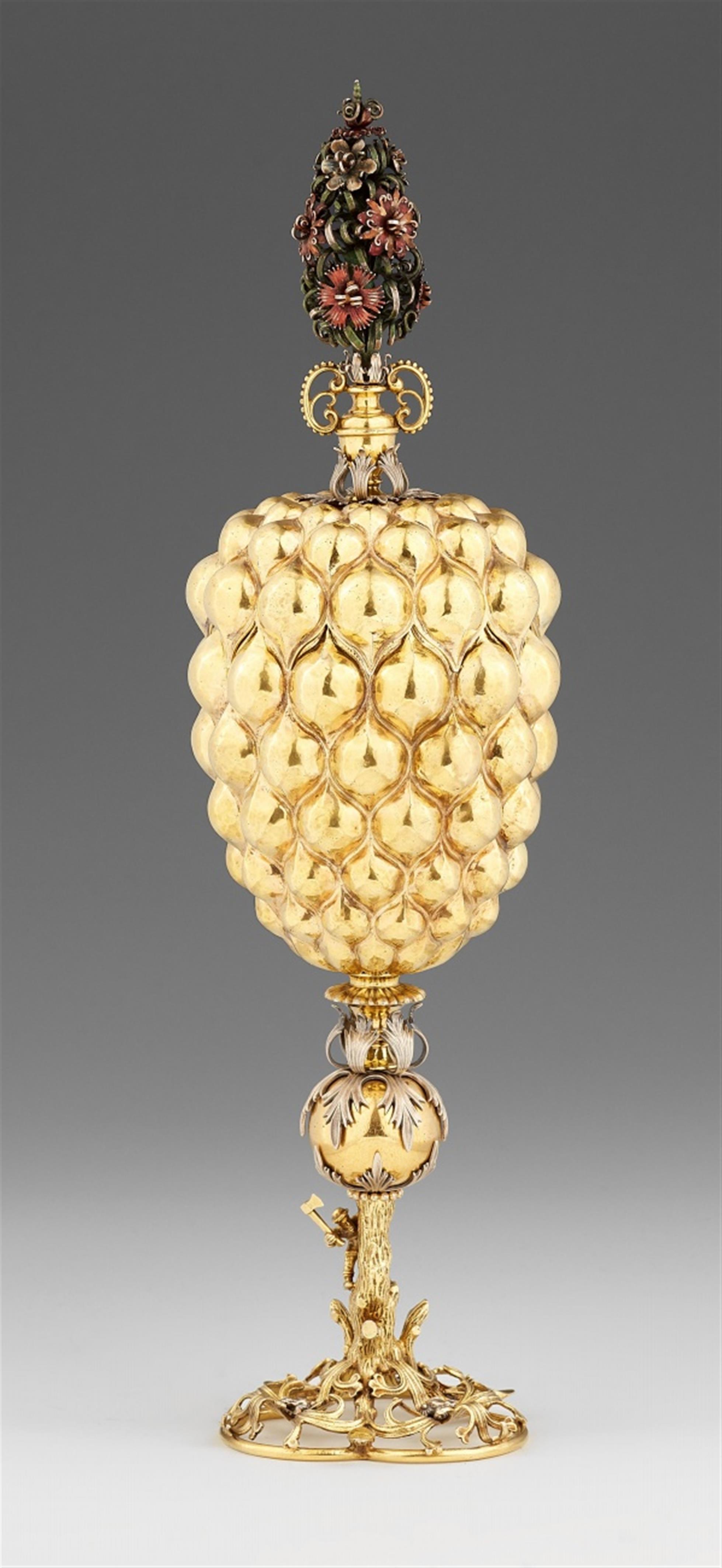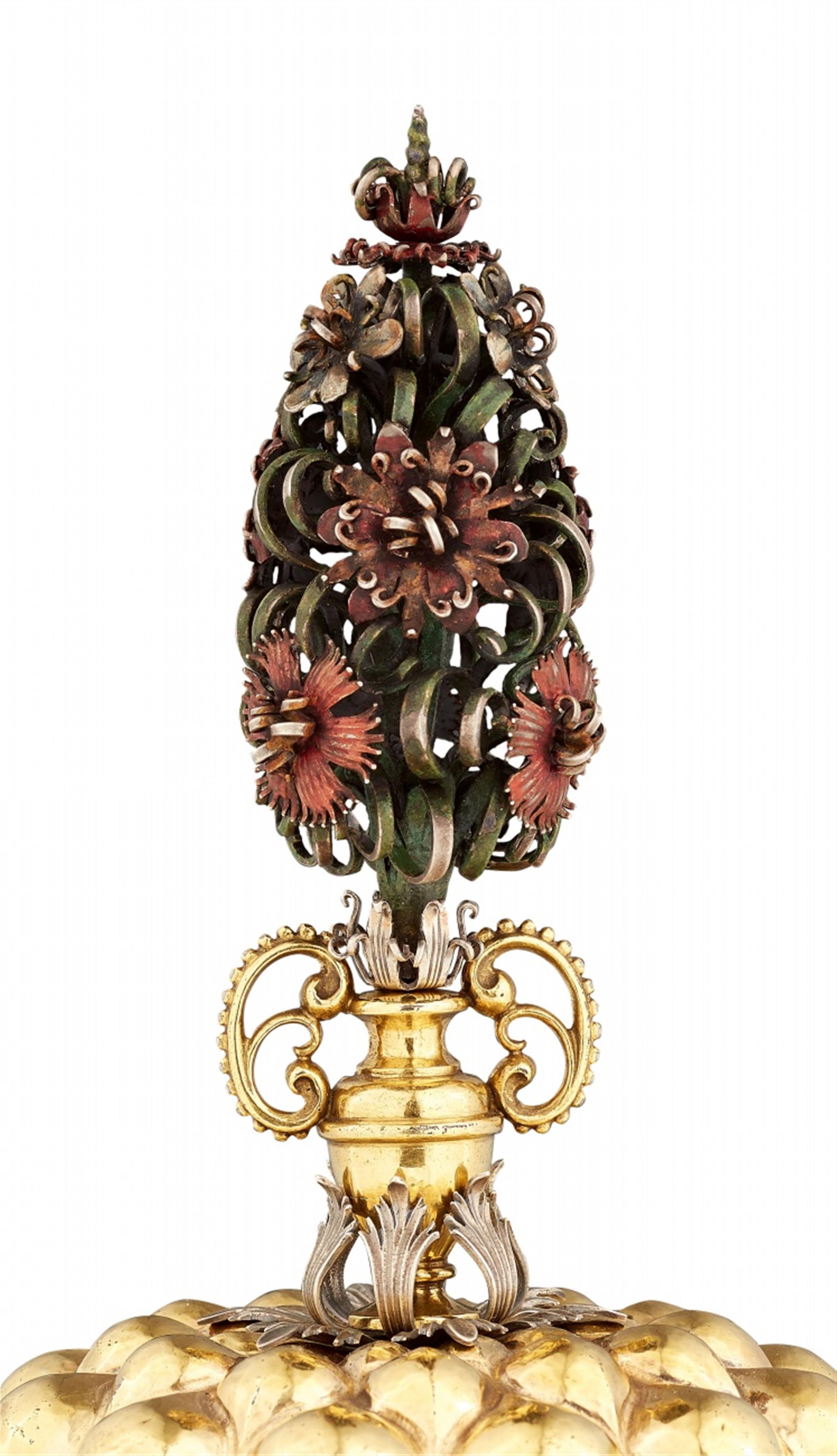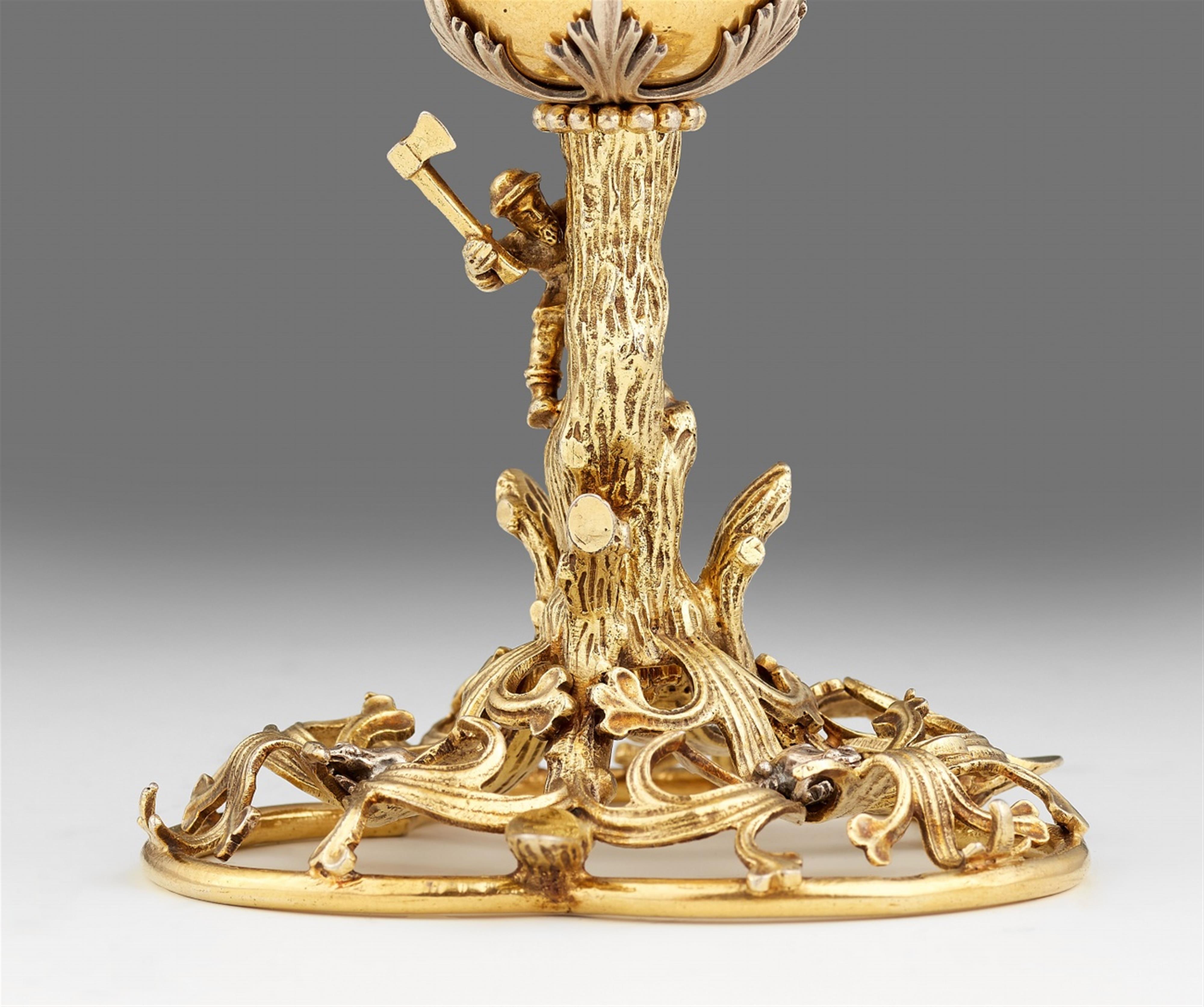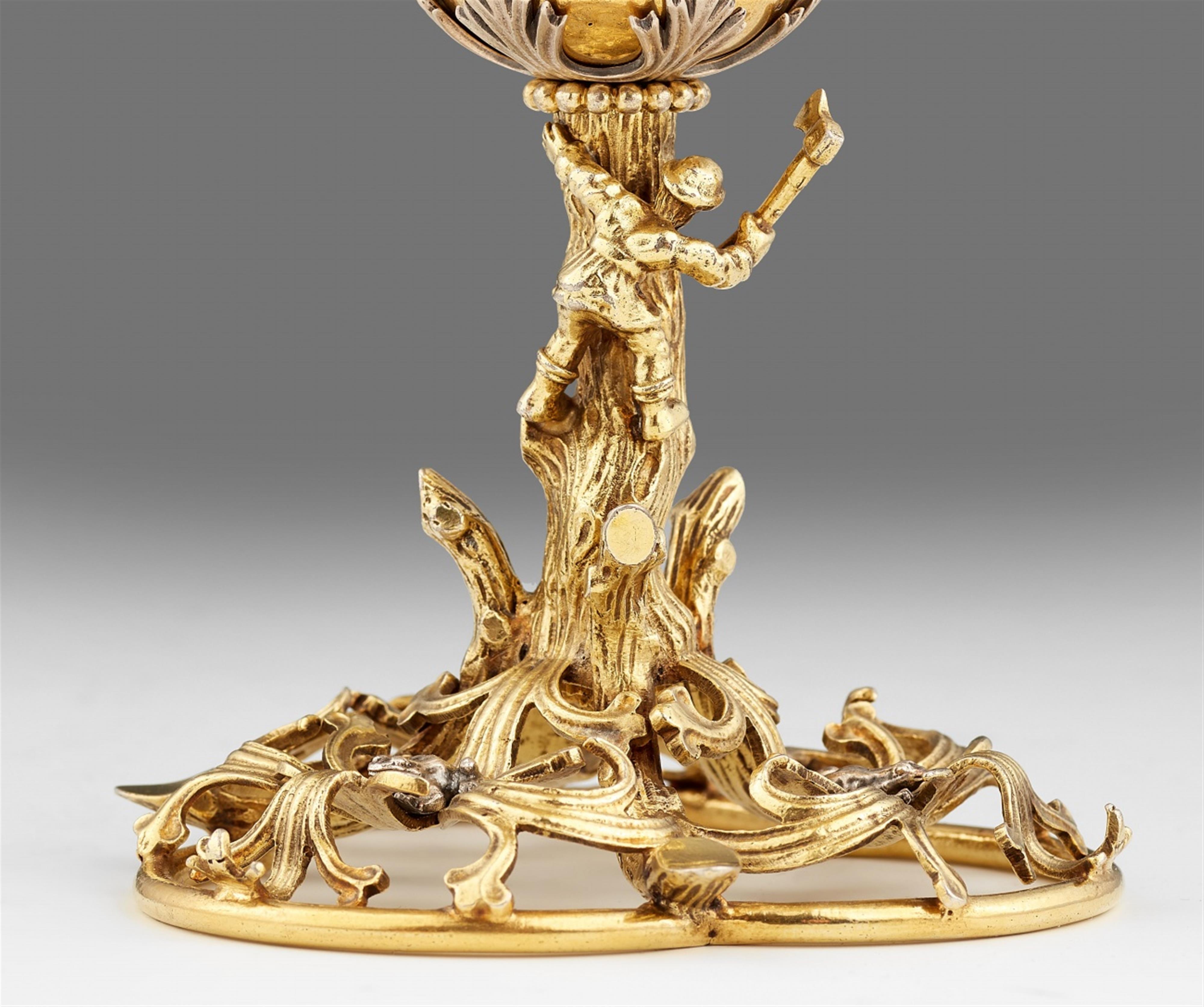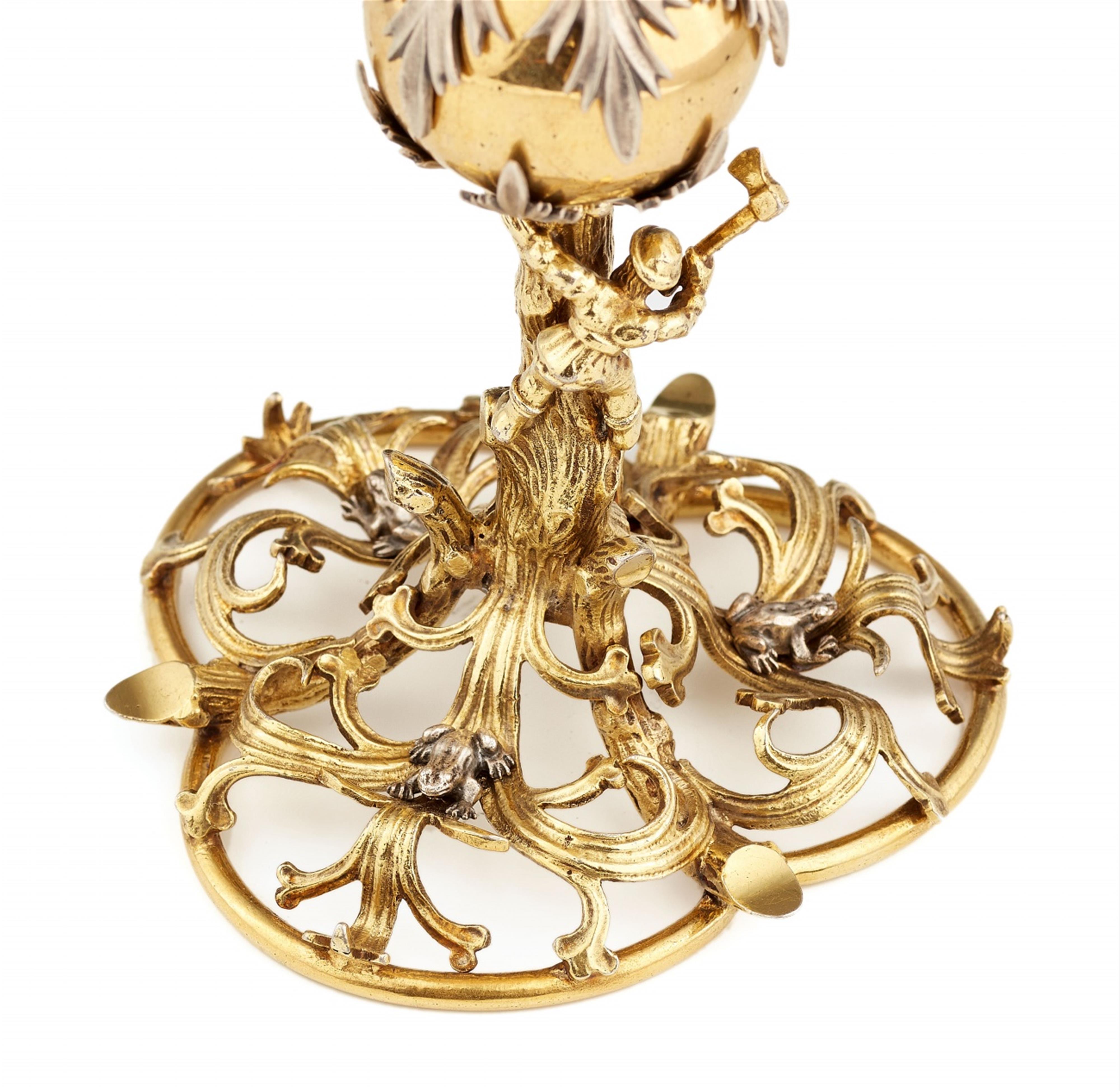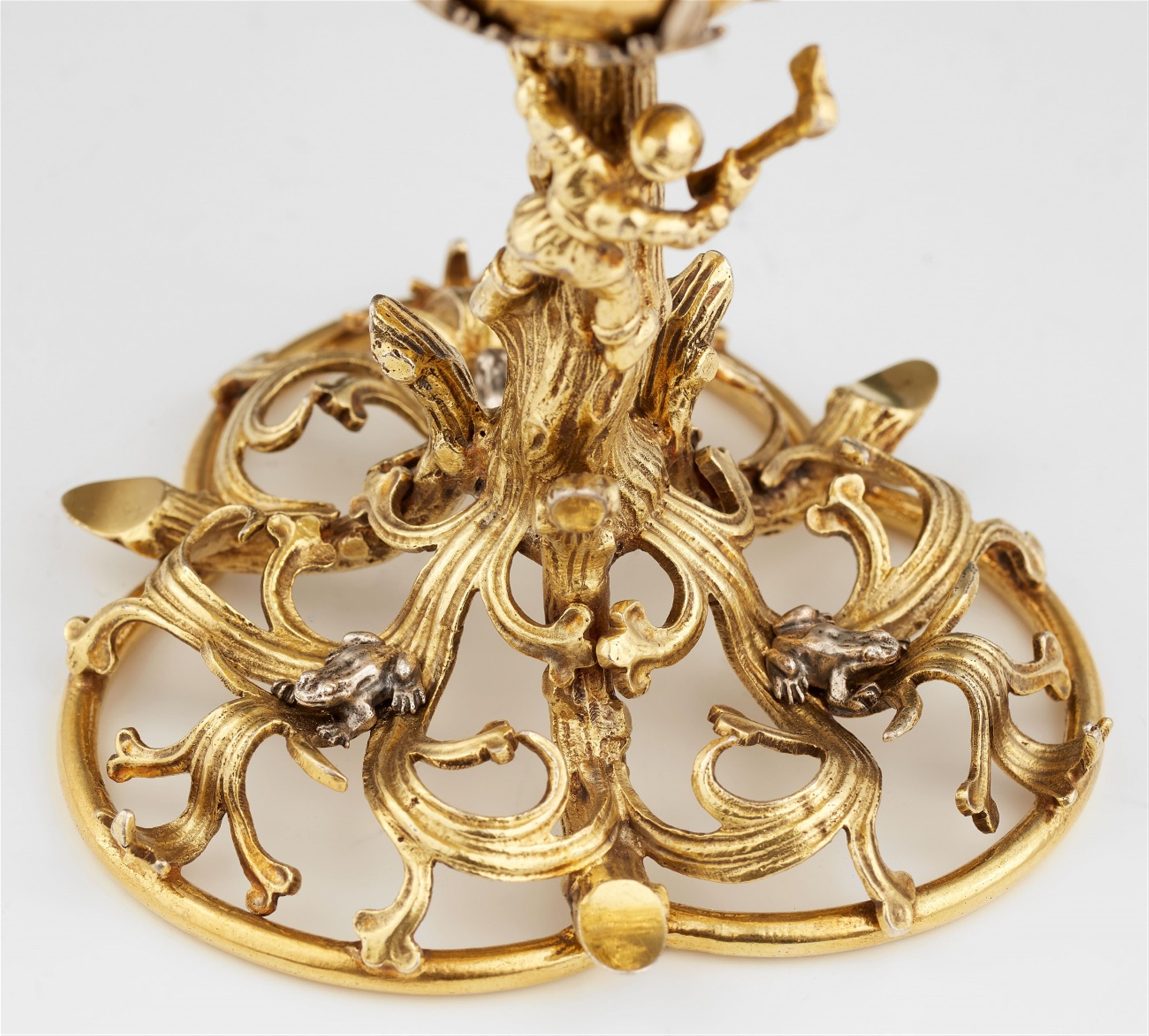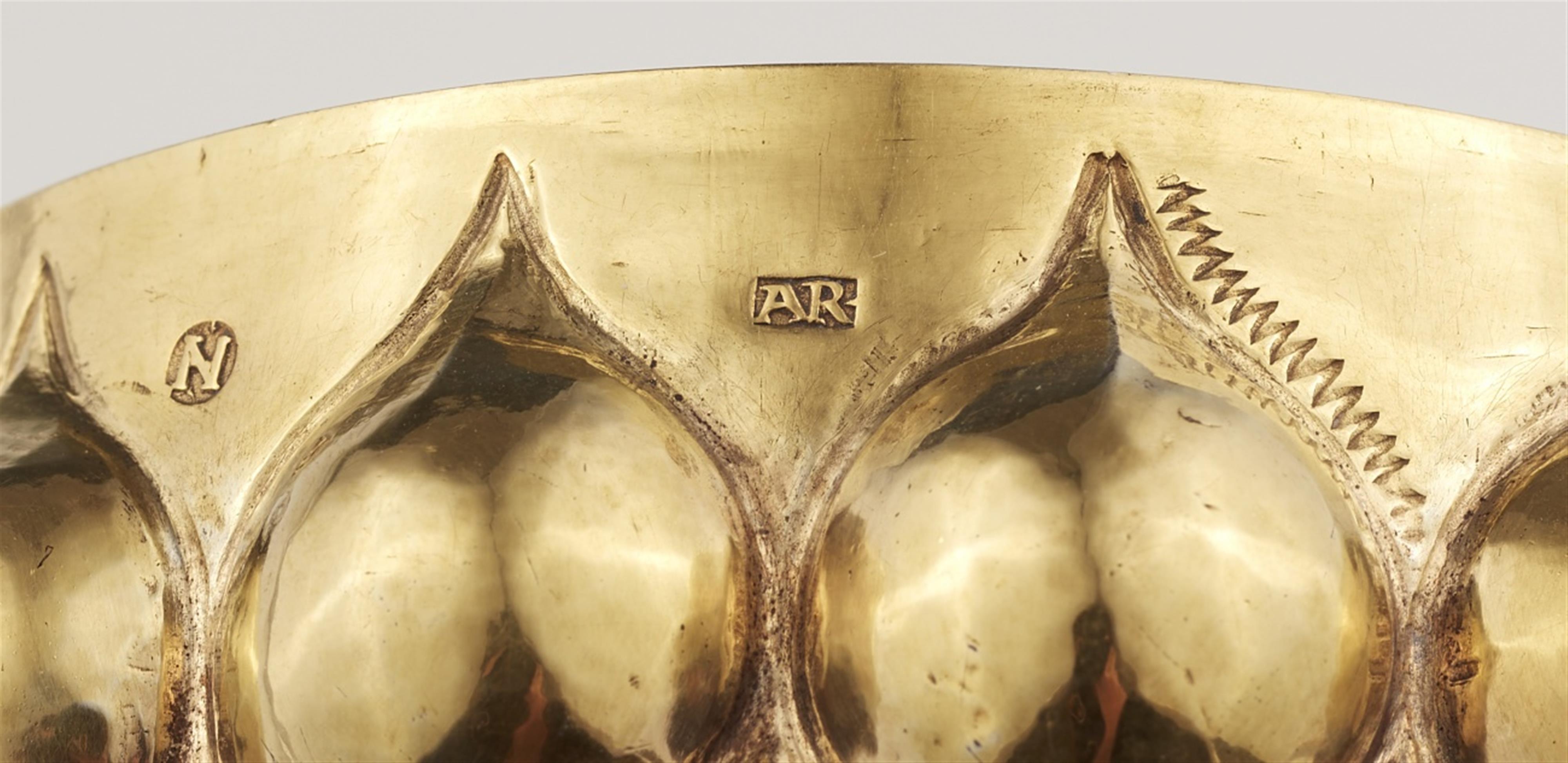An important Renaissance polychromed silver goblet
Silber; vergoldet. Silver-gilt cup on a pierced trefoil base with chased vine sprigs and three naturalistically rendered frog appliques. The stem formed as a detailed figure of a wood cutter beside a grape vine supporting a spherical connecting motif and the large cuppa formed as a stylised bunch of grapes, the corresponding lid with a polychrome scroll finial. Brands: BZ Nuremberg, MZ Andreas Roßner (also: Rößner, 1592/93 - 1601, GNM No. 753), tremolier stitch. H 32.9 cm, weight 402 g.
Marks of Andreas Roßner, 1592 – 1601.
The term “kaltemail” or “cold enamel” has been used in academic literature since the 19th century, but it is somewhat misleading since it suggests that this is an enamelling technique. The type of polychromy used on the finial of this piece and on several other items of silverware, for example works in the Grünes Gewölbe in Dresden or the Kunstkammer of the Historisches Museum in Vienna, is not in fact enamel, which must be melted, but a painting technique in which a pigment or lacquer is simply mixed with a suitable medium and painted on to the finished metalwork. For this reason, Weinhold/Witting have suggested the use of the term “polychromy” for this technique when found on silverware (cf. ibid., p. 16 ff.)
As might be expected, this kind of polychrome décor displays a much lower adhesion than a melted enamel glaze, thus it is extremely rare to find items with this kind of décor in public or private collections today. A second feature that makes this particular goblet unique is the delicately pierced base, which is rarely encountered on chalices of the 16th or 17th centuries. The standard work of the Germanisches Nationalmuseum from 2007 does not list a single example. Even in international museums there are few comparable pieces to be found, although one work with an almost identical base can be found in the Louvre in Paris (inv. no. OA 628).
Literature
Thus far, the only other known work by Roßner is a drinking vessel in the form of an owl in a private collection, which was exhibited in 1968 in the Centennial Museum in Vancouver, cf. cat.: GNM, no. 753/01. For more on polychromed metalwork, cf.: Weinhold/Witting, Farbfassungen auf Goldschmiedearbeiten des 16. bis 18. Jahrhunderts am Dresdner Hof, Dresden 2018, especially relevant here is a Nuremberg silver chalice by Hans Beutmüller, illus. 5. For comparable Nuremberg works with pierced bases, cf.: GNM 2007, no. 640.05, and cat.: Chefs-d'oeuvre d'orfèvrerie allemande, Paris 2017, no. 21.

